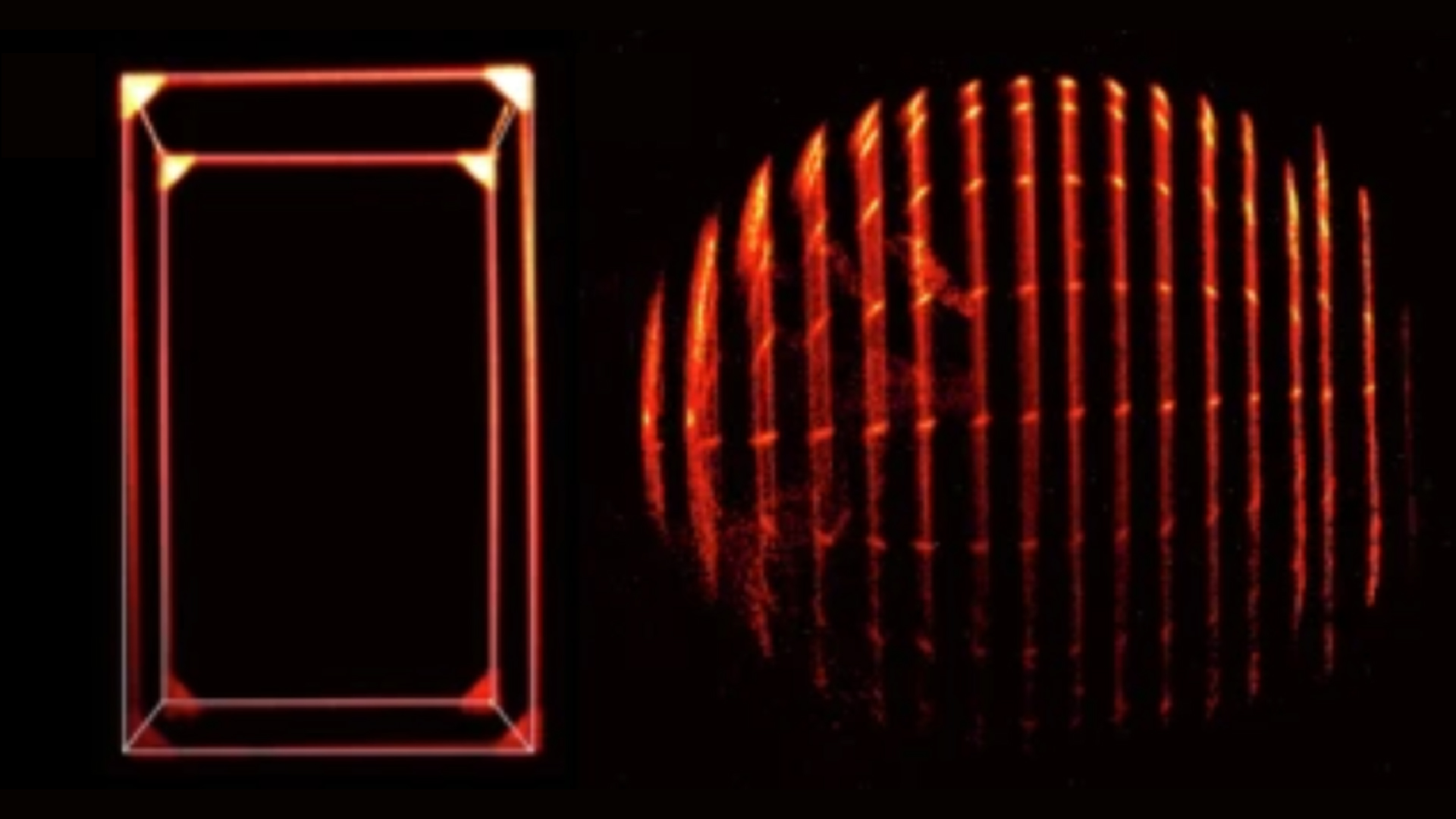Goopy GIF: You Can't Look Away from This Mesmerizing Experiment
As a series of goopy platforms climb down a bolt in a mesmerizing GIF posted on Reddit, it almost looks as if Mario should hop from one to another.
But this isn't 1990's video-game graphics, it's real life. The GIF shows a demonstration of ferrofluid, a suspension of nanosize magnetic particles in oil. The magnetic particles are small and coated in a surfactant, which is a substance like soap that helps to keep the particles evenly distributed throughout the fluid, even when they're put next to a strong magnet, said Brandon Jackson, a doctoral candidate in mechanical engineering at Michigan Technological University, who has studied applications for ferrofluids.
In the GIF posted on Reddit, and in many other similar demonstrations seen on YouTube, Twitter and GIPHY, a magnet under the bolt provides the magnetic field. The liquid aligns itself with the invisible lines of the magnetic field, resulting in the spiky look. Surface tension holds the liquid together. Meanwhile, gravity pulls the liquid down the screw, resulting in the downward motion of the "platforms." [See More Fun Chemical Reaction GIFs]
The shape "is a minimum-energy solution between the gravitational energy, the surface tension energy and the magnetic energy," meaning the substance chooses the route that demands the least amount of energy, Jackson told Live Science.
In some GIFs, the demonstrator holds additional magnets, which can alter the shape of the ferrofluid further, or move it around a surface like a snuffling hedgehog.
Actually, it's rocket science
NASA scientists invented ferrofluids in the 1960s when they were trying to figure out how to efficiently move rocket fuel from a tank into an engine in a zero-gravity environment. The researchers thought that by magnetizing the fuel with tiny iron oxide particles, they might be able to use a magnetic field to suck the fuel into the engine, leaving behind any pesky gas bubbles that could cause damage, according to NASA's Technology Transfer Program.
Get the world’s most fascinating discoveries delivered straight to your inbox.
Solid-rocket propellants obviated the need for the ferrofluids in space, but scientists quickly realized that ferrofluids could also be used to form seals to protect semiconductor chips during fabrication. Probably the most common industrial application today is in speakers, Jackson said. Ferrofluids are used to dampen vibrations in speaker components to prevent a distorted sound.
The future of ferrofluids
Ferrofluids make for fun science-fair demos, but they're also the subject of active research. One potential application, Jackson said, is in medicine. Some scientists have considered ferrofluids as an alternative to radiation treatment for cancer, he said. The fluids could be injected into tumors and then vibrated with a rapidly alternating magnetic field that would heat them, essentially "cooking" the tumor from the inside. Radiation similarly kills tumor cells with heat, but causes damage as it passes through tissue on the way to the cancer. Ferrofluids could similarly be used to target drugs to certain tissues, Jackson said.
Jackson and his colleagues have a different use for ferrofluids in mind. They're studying ferrofluids as self-assembling thrusters on tiny satellites. Traditional propulsion systems work well on large satellites, Jackson said, but an increasing number of the satellites shot into orbit are the size of cellphones or shoe boxes. Many use electrospray thrusters, which use tiny electrified needles to spray jets of fluid in order to propel the satellite. But the spiky hedgehog shape that ferrofluids form under the influence of a magnetic field can also shoot jets of ions — a form of propulsion that requires only a magnet, not a precision-fabricated needle.
Original article on Live Science.

Stephanie Pappas is a contributing writer for Live Science, covering topics ranging from geoscience to archaeology to the human brain and behavior. She was previously a senior writer for Live Science but is now a freelancer based in Denver, Colorado, and regularly contributes to Scientific American and The Monitor, the monthly magazine of the American Psychological Association. Stephanie received a bachelor's degree in psychology from the University of South Carolina and a graduate certificate in science communication from the University of California, Santa Cruz.

